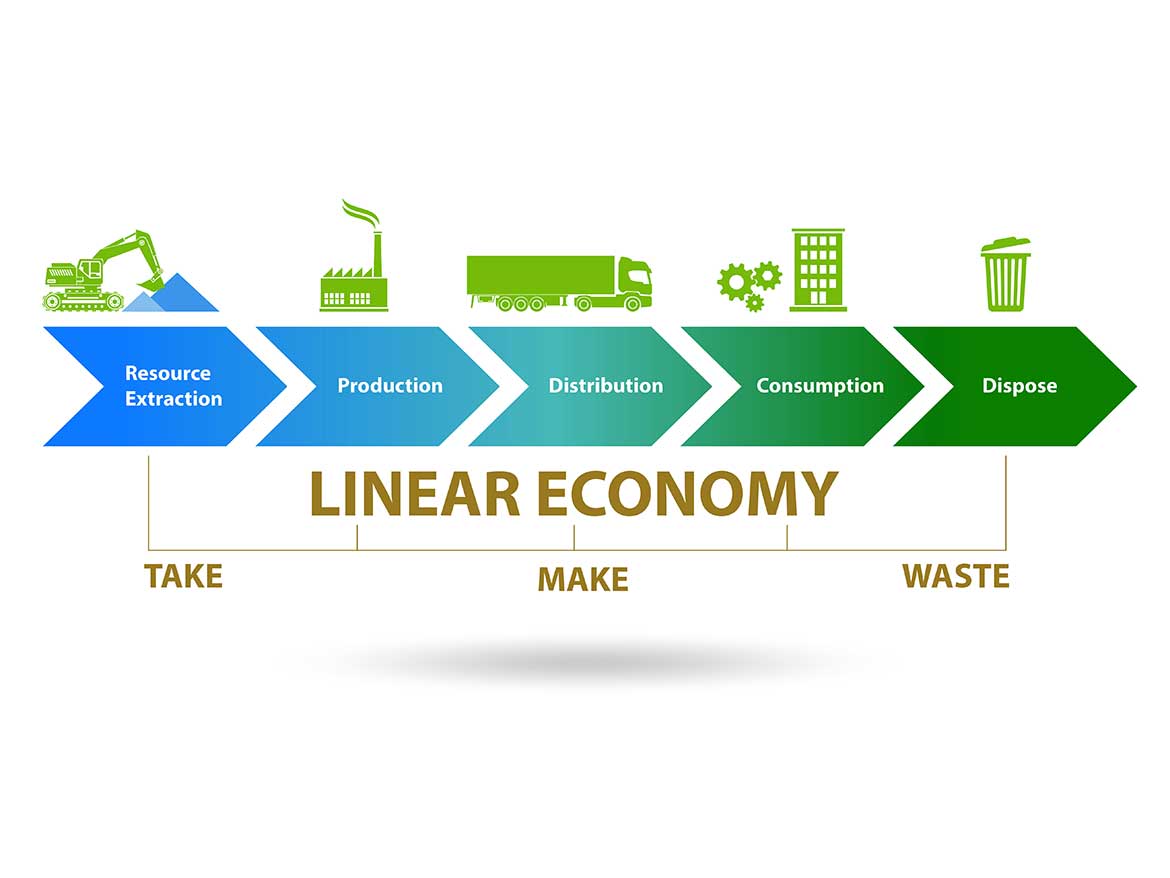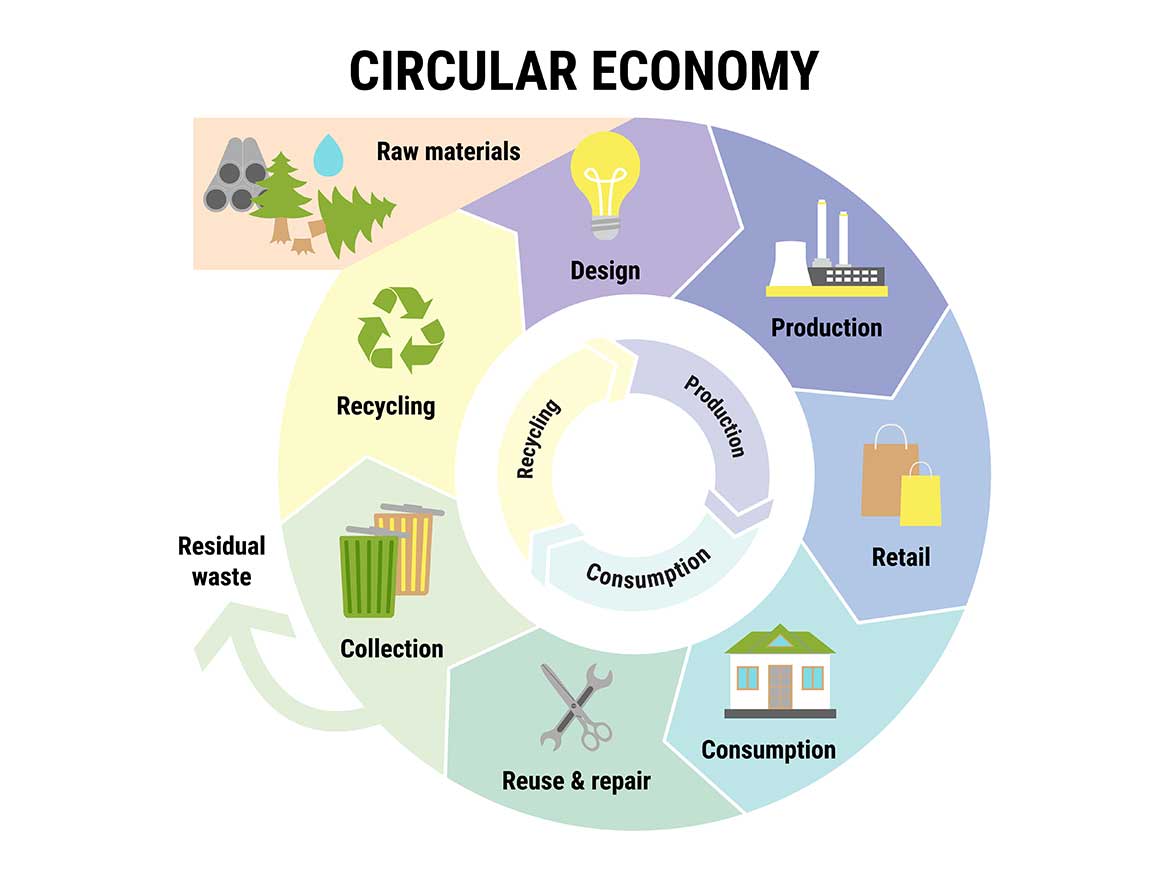Starch-Based Polymers in Waterborne Coatings
September 8, 2023
Starch-Based Polymers in Waterborne Coatings
September 8, 2023SimonSkafar, Creatas Video, via Getty Images.
Waterborne Coatings – Sustainability Considerations
Petroleum-based materials (PBMs) have a variety of uses that have long benefitted consumers and industry. However, researchers and the public have become increasingly concerned about the environmental and health impacts of these materials over the last several decades. Today, sustainability is both a growing trend and seen as an act of corporate responsibility.
PBMs are commonly used in many waterborne coating segments. Some waterborne coating segments have undergone reformulation to synthesize biopolymers, dramatically reducing volatiles and the impact upon the environment and people. Still, PBMs are derived from fossil fuels and do not degrade, decompose, or dissolve within the limitations of earth’s natural ecosystem; they remain essentially unchanged in commercial landfills and the environment for centuries to come.
Today, there is significant change underway by many in the industry to replace these PBMs wherever possible with sustainable materials. True biopolymers, on the other hand, typically have fewer volatile organic compounds (VOCs) and will degrade within the earth’s ecosystem. Much of the North American industry is following mandates by consumers and government agencies that intend to drive benefits to the environment, the workplace, and society by preserving natural resources, including fossil fuels, and driving the advancement of sustainability criteria in manufacturing.
Biodegradability – Considering the Whole Product Lifecycle
The practice of designing or engineering products that use non-biodegradable materials has been an issue for too long. A growing shortage of landfill space first started making headlines in the 1970s. Unfortunately, the practice of engineering single-use, non-biodegradable products remains a problem 50 years later. Landfills, both in the United States and abroad, receive a continuous stream of waste, much of which does not breakdown or decompose. This bleak reality is evidence that not enough has changed.
Biodegradable coatings are those in which degradation results from the action of naturally occurring microorganisms, such as algae, fungi, or bacteria. Today, there are institution and business resources that document or certify a material as being biodegradable or compostable within a specific span of time. Additionally, ecotoxicity measures how well the result of such biodegradability supports ecology. A larger use of biodegradable materials reduces both ecotoxicity and the volume of waste remaining in landfills due to increased compostability.
Renewed critical discussion about natural resources, recycling, and sustainability have shed light on the lack of regard for end-of-life in product design and manufacturing, fueling demand for accountability in the business community. Consumers are pushing for greater corporate accountability, calling for environmental stewardship as a measure of leadership performance.
Linear Versus Circular Economies
Critics call the “landfill approach” to solid waste disposal over the past 50 years a result of a “linear economy.” This approach is built upon the consumption of natural resources, which ends in the accumulation of waste. This has been the end result of common practice in industrial communities around the world. In linear economies, manufacturing is disconnected from the ever-looming problem of solid waste, which accumulates as societies become larger. Use of recycled PBMs in manufacturing has also failed to gain traction due to high cost of collection and sorting for reuse.

The concept of a “circular economy,” however, challenges the way the industry has manufactured for the last 100+ years. This approach fundamentally considers the environmental impact of products and their components all the way from the initial concept stage to the end of the product’s useful life – in other words, a cradle-to-grave approach, also known as a lifecycle management approach. Waste streams are evaluated for further value extraction, treatment, and material waste utilization. The cradle-to-grave mindset is adopted into engineering models, where materials, product design, and end-of-life considerations are understood within the process and not apart from it.
Looking for a reprint of this article?
From high-res PDFs to custom plaques, order your copy today!

Today, sustainability measurements in manufacturing are required for many products to gain broad-based consumer acceptance. Modern manufacturing methodologies, social accountability, and end-of-life considerations are top of mind for consumers, who are voting with their wallets to demand products that meet their sustainability expectations.
Waterborne Coatings – Reducing VOCs in Formulations
Health, sustainability, and environmental stewardship directives are not limited to the paint and coatings industry. Benefits also extend to other industries that use waterborne coatings in their products such as the food packaging and forest products segments, which use bio-based materials instead of conventional PBMs to make their products more sustainable and compostable.
Using bio-based materials offers the potential to reduce carbon emissions, reduce usage of natural resources, and transition away from petroleum to natural, plant-based materials. Creating more sustainable coating formulations started with addressing VOCs in the chemistries of formulations including benzene, ethylene glycol, styrene, or xylene. Several of these chemistries have been identified as neurotoxins, which when used, vaporize and pollute the air breathed by people and animals. As a result, many localities (governments) have established Permissible Exposure Limitations (PEL) on VOCs, requiring industries to move toward safer low- and zero-VOC binders. Consumers further demand waterborne coating materials that cause zero harm to the environment and have no adverse health effects.
Solvent-based formulations typically have 40-50% VOCs, while waterborne formulations have only 2-8% VOCs. Evaporation of hydrocarbons from one gallon of solvent-based paint is equal to approximately six months of emissions from an automobile. The matrix of applications using waterborne coatings encompasses a diverse range of processes and applications. Over the last decade many waterborne coating formulations have been reformulated to reduce VOC levels, which significantly lowered the environmental impact and potential harm to the health of industry workers and consumers.
Regardless of the gains over the last several decades, waterborne coating formulations can still go further. Material science technology continues to make high-performance materials available, presenting the opportunity to re-formulate using bio-based chemistries. An even greater departure from the petroleum-based formulary approach of the last 75 years.
Bio-Based Materials for Waterborne Coating Applications
The marketplace offers a variety of products that can be classified into either synthetic biodegradable coatings or natural biodegradable materials. While synthetic biodegradable coatings are developed using natural resources, from bacterial synthesis for example, natural biodegradable coatings are based on natural polymers (polysaccharides) that include carbohydrates, such as cellulose and starch.
Cellulose, a very complex carbohydrate, is considered the most abundant naturally occurring organic material, consisting of 3,000 or more glucose units. Cellulose is central in the development of materials such as hydroxy ethyl cellulose (HEC) or methyl cellulose (MC), which are common waterborne coating additives that modify rheology. Due to its extremely high molecular weight, cellulose is considered insoluble in its native form, and must undergo reductions in average molecular weight in order to be useful within the coatings industry.
Starch, as a carbohydrate, can be obtained from various sources containing linear amylose molecules and/or branched amylopectin molecules – such as corn, maize, tapioca, and potatoes – where the ratio of amylose or amylopectin varies based upon the source. Starch is known to be one of the least expensive biopolymer materials available and has immense potential as a renewable, biodegradable resource. The environmentally conscious atmosphere seen across the globe today presents great opportunity for technical developments in the use, formulation potential, and biosynthesis of these natural polymers as feed stock for manufacture of polyols and polyesters.
Historically, many waterborne formulations have effectively utilized a broad range of natural binder types, including carbohydrates, casein, or soy protein. The drive toward linear economies in decades past moved the industry toward use of resins, replacing these natural materials in formulations. Today, study of renewable materials in waterborne formulations is receiving greater priority as industry and society embrace a more circular economic approach to business. Such carbohydrate-based materials are used extensively in allied waterborne coating industries alone or together with resins, providing effective performance properties, binding strength, and improved coating rheology. Today, sustainability is being included in the grade assessment of formulations. Using bio-based ingredients will be critical to create products that are made up of 50% or more naturally derived materials.
Summary
The waterborne coatings industry has undergone significant change over the last 50 years with the replacement of resins with high levels of VOCs known to be harmful to both the environment and the health of the consumers. Many of these formulations utilize eco-friendly biopolymers, which have beneficial properties such as being biodegradable, and contain much fewer VOCs.
Today, there are renewable materials that are worth consideration and greater investigation to further improve sustainability of products at the end of their useful lives; these materials are carbohydrate-based polymers produced from starch.
The following is a listing starch types by their product modification.
Pre-Gelled Starch – Stir-In Starches
Pre-gelled starch materials are unique in that they allow for the use of a high-molecular-weight product as a powder, where standard liquid starches would not be sufficiently suitable because of the higher water content. Since pre-gelled starch products have been spray dried after cooking, they have high solubility, which allows these materials to be dry blended into formulation pigment slurry or into a latex, resin liquid, and contribute to higher binding strength per dosage.
Ready-for-Use – Liquid Starches
Ready-for-use, liquid starches are designed for use in formulations where the desired solids content of the formulation can limit the use of traditional starch products in the waterborne coating formulations. Liquid coating starches are designed having high solids content, similar to those of common latex resin materials. At equivalent material solids, the utilization of these materials allows the formulator to maintain solids content of the formulation. Formulation viscosity will change with the replacement of starch for latex because of the influence of the starch molecule upon coating rheology.
Hydrophobic Starch Esters
Hydrophobic starch esters are generated with an octenyl succinic anhydride (OSA) derivative substituted onto the starch molecules. This functional addition of OSA to the starch has been demonstrated to have a similar influence to polymeric surfactants in some formulations. This will generate a weak ionic network when dispersed with latex resin in waterborne formulations, comparable to that of associative thickeners.
Starch Ethers
Starch ethers are a specific variety of starch that are produced by the nucleophilic substitution of a chemical derivative (i.e., ethylene oxide) onto the starch molecules while in an aqueous suspension. The most widely used substituents of this type is ethylene oxide, however propylene oxide is also used to produce starch ethers. These derivatized starch types offer excellent viscosity stability and binding strength.








